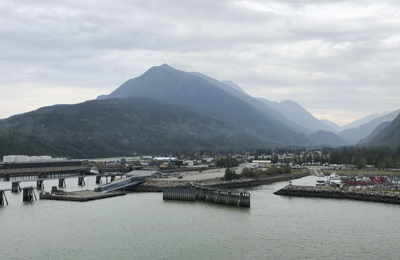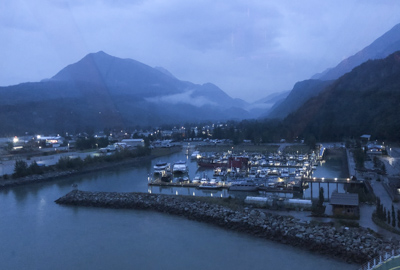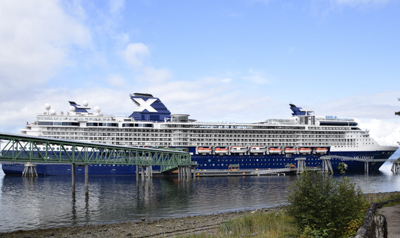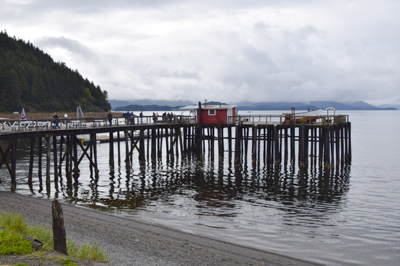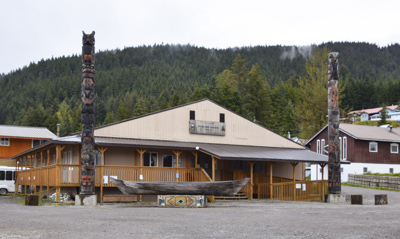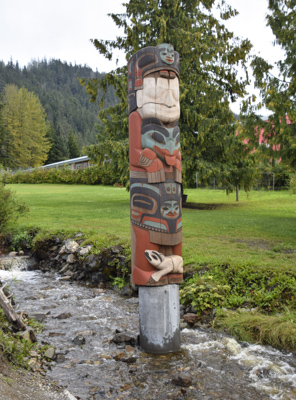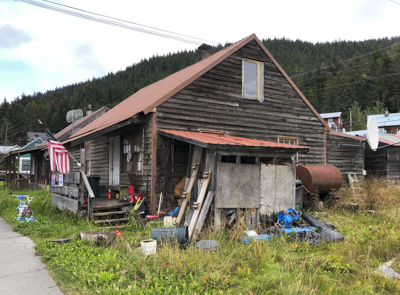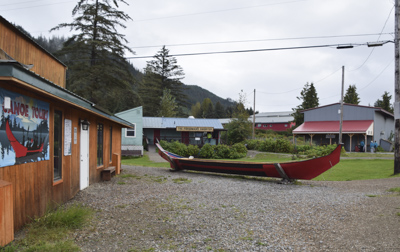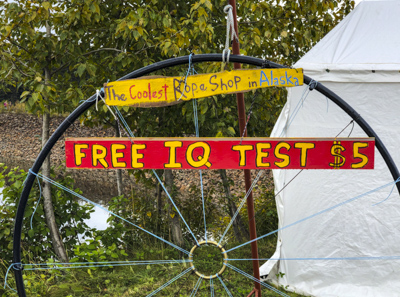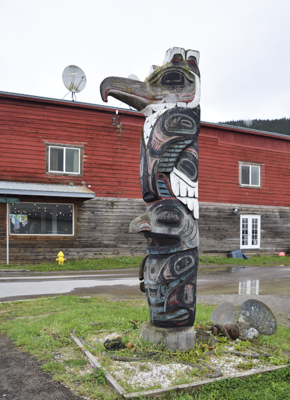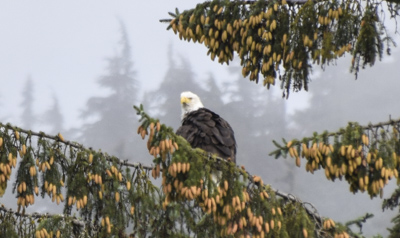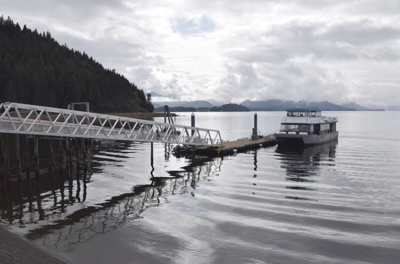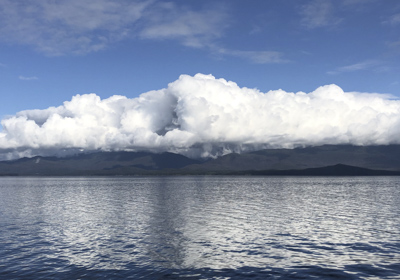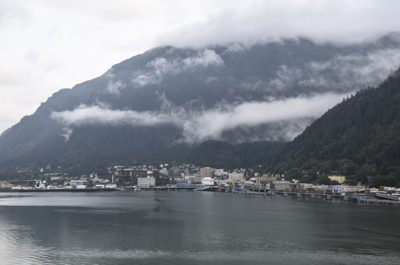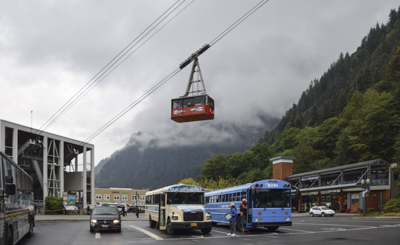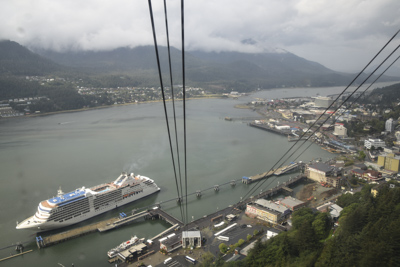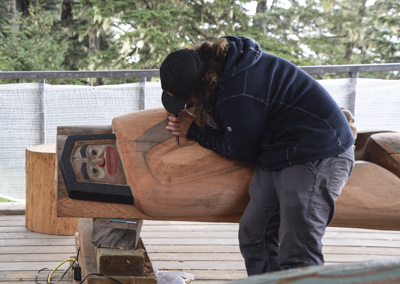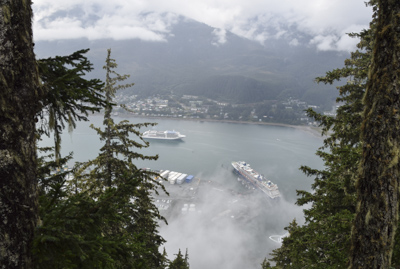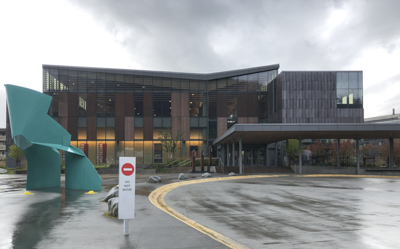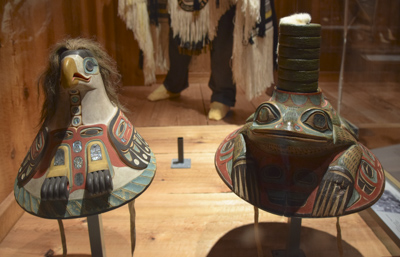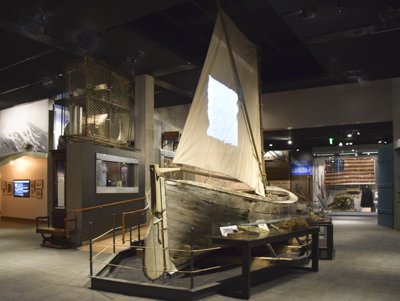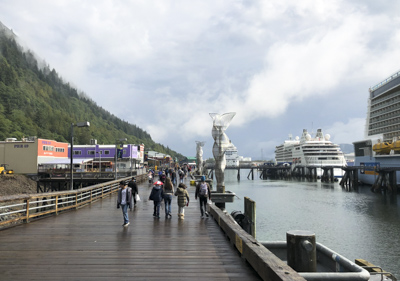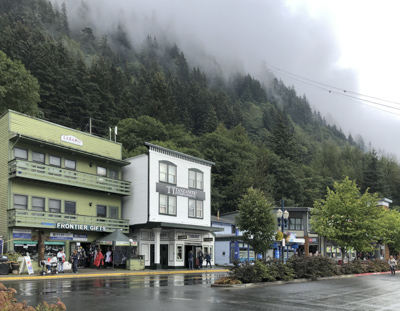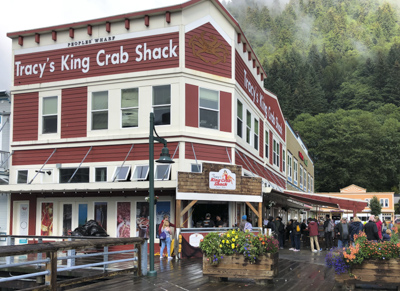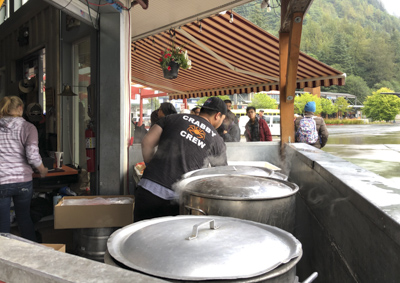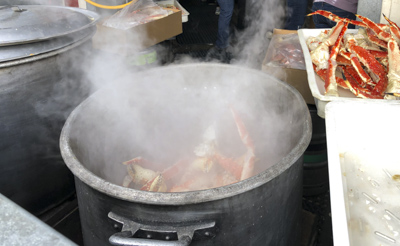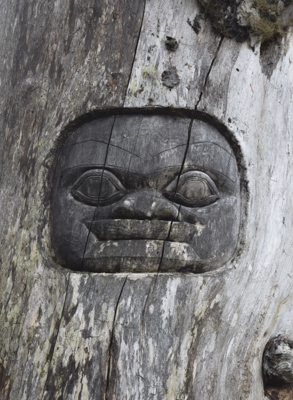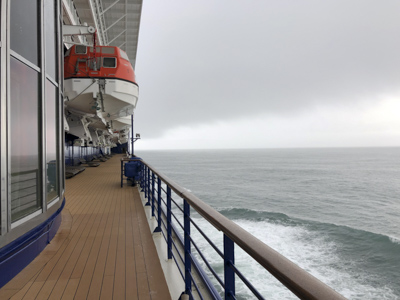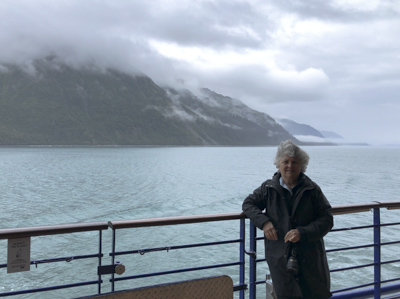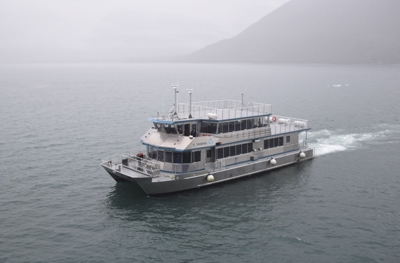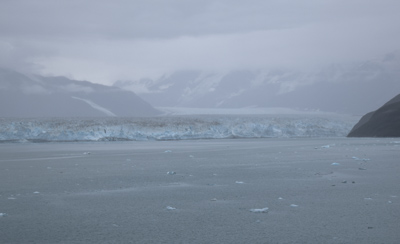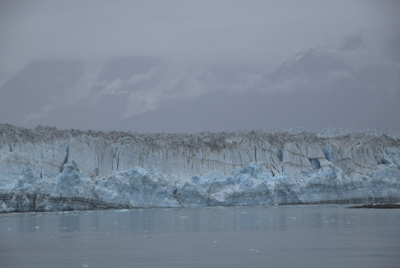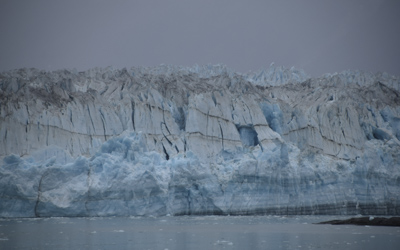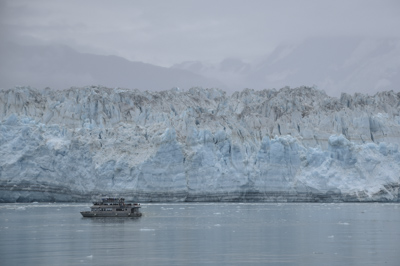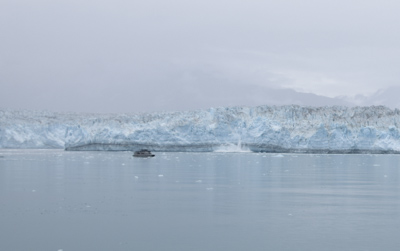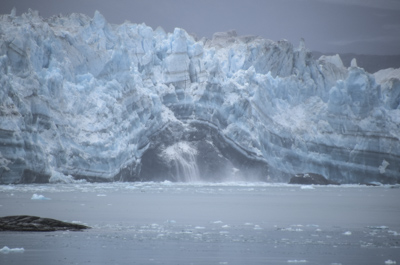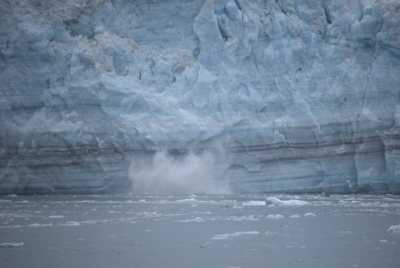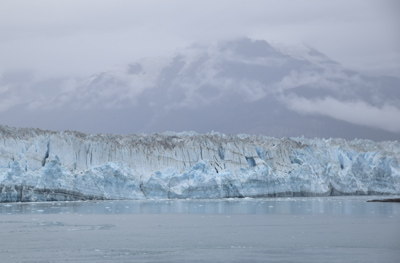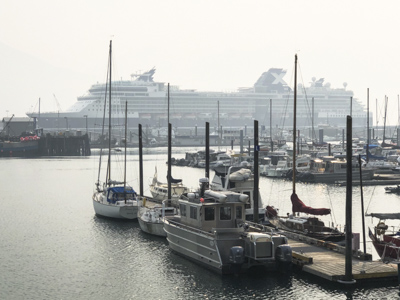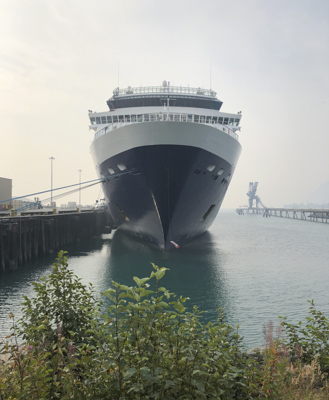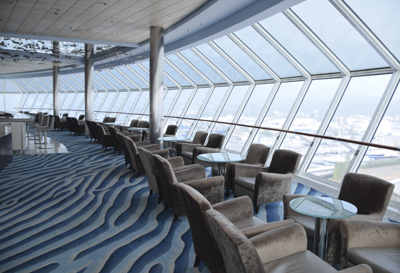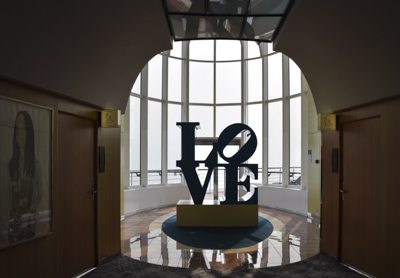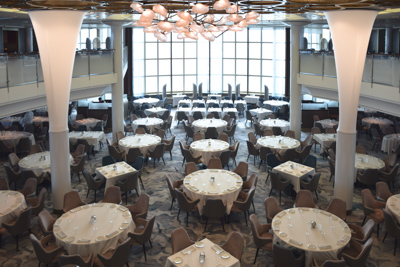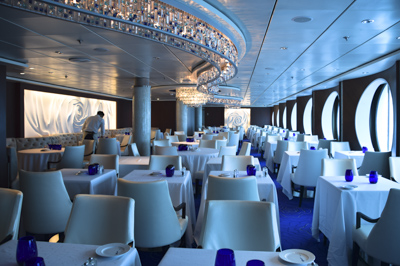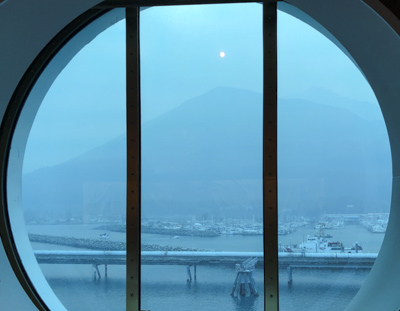Monday August 26, 2019
The Celebrity Millennium arrived in the tiny town of Skagway, Alaska early in the morning. In the local Tlingit language, skagway literally means ‘beautiful woman’ and refers to the myth of a woman who transformed herself into a rock that blows strong winds into the bay and causes rough seas in the area. Luckily for us, she was quiet today.
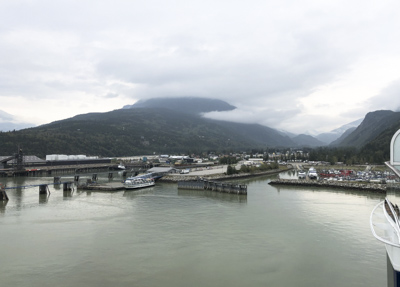
Gold was discovered in the Klondike region of Canada’s Yukon Territory in 1896 and Skagway became the gateway for thousands of prospectors who arrived by ship. They climbed the mountains through White Pass and onward into Canada. By 1898, the population of Skagway grew to almost 10,000 people, making it the biggest city in Alaska at that time.
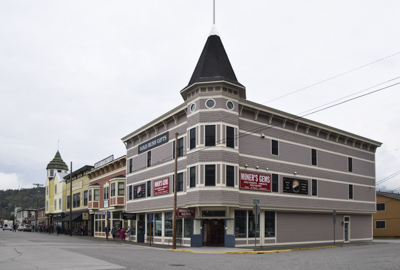
Today, Skagway is a tourist town fueled by an endless supply of cruise ship tourists from April through October. A local tour guide told us there are only about 500 year-round residents who brave the frigid winters.
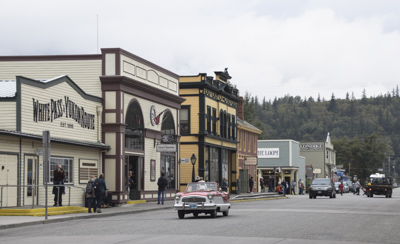
In 1898, the White Pass and Yukon Route narrow gauge railroad was put into operation to transport prospectors more easily across the mountains. Unfortunately, the stream of gold seekers began to diminish by the time the railroad was completed and by 1900 the “Gold Rush” was nearly over. However, we were not deterred from taking an excursion on the restored railroad up nearly 3,000 feet to White Pass Summit on a train pulled by a genuine vintage steam engine.
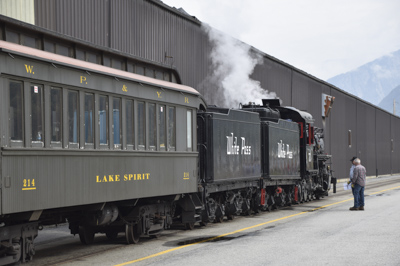
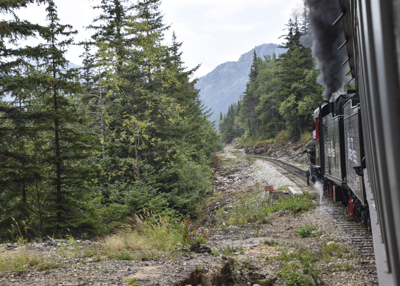
There was a tour guide aboard who provided running commentary throughout the journey. He explained the history of the region and the hardships of the prospectors and railroad construction workers. He also pointed out significant landmarks, natural sights, and wildlife. We also had a lovely young “train guide” in our car named Raven who passed out snacks and drinks. Our wooden passenger car was built in 1909. The seats were comfortable and we were able to go out between cars to take pictures.
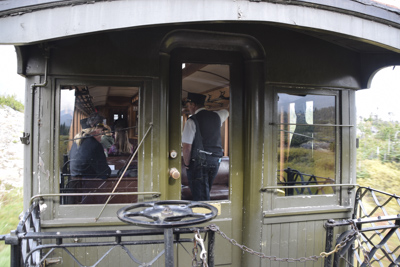
At one point, the train stopped and one of the conductors climbed down onto the tracks. She walked to a switching signal box and manually moved the tracks to divert an on-coming diesel tourist train. It was fun to watch:
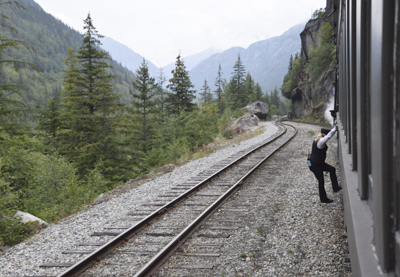
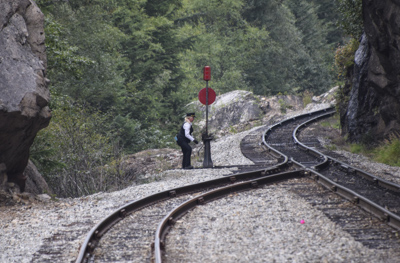
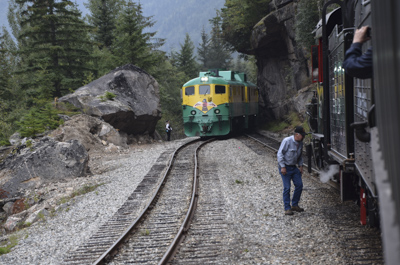
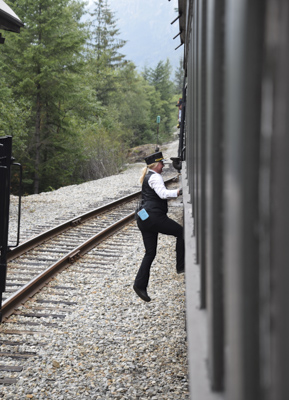
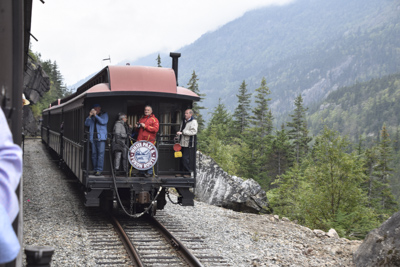
It was a 3.5 hour – 40 mile – round-trip ride up to the Summit of White Pass: elevation 2,885 feet. The skies cleared as we climbed over the mountains above the tree line and we were treated to spectacular views.
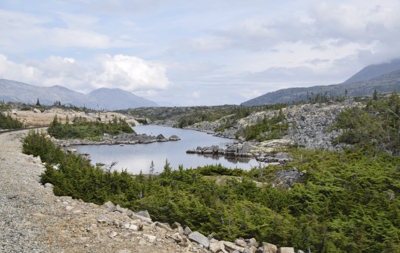
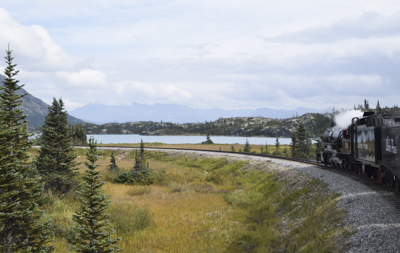
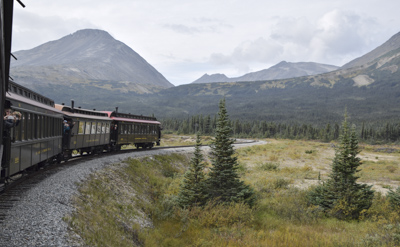
The international border is marked by a replica of the log border station used by the North West Mounted Police during the gold rush. Out front are flags of the United States, Alaska, British Columbia, the Yukon Territory, and Canada.
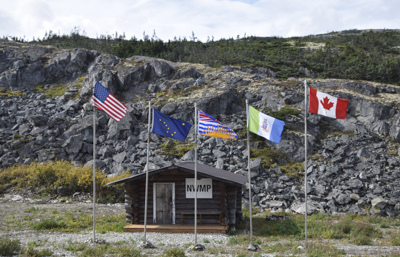
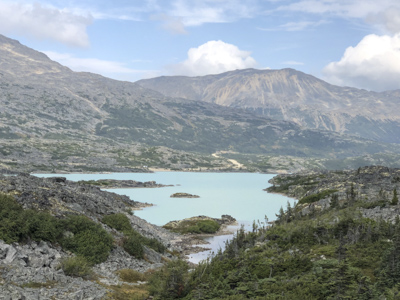
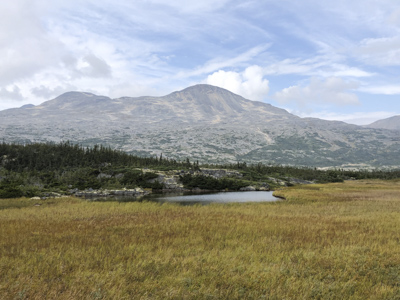
We returned to Skagway in plenty of time to explore the town. It’s all about shopping, shopping, shopping……
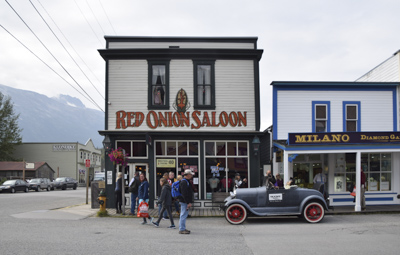
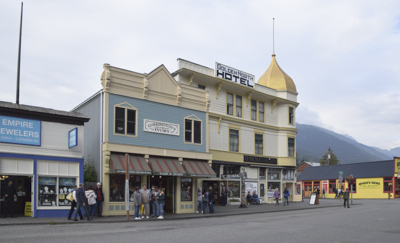
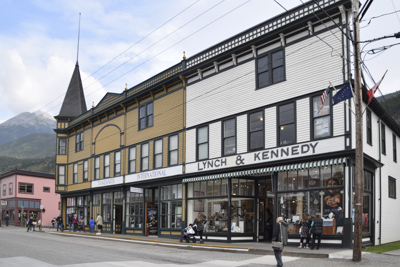
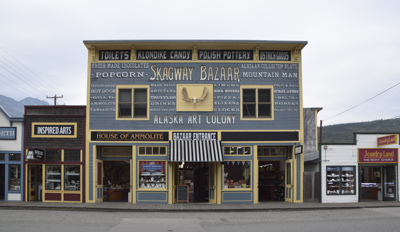
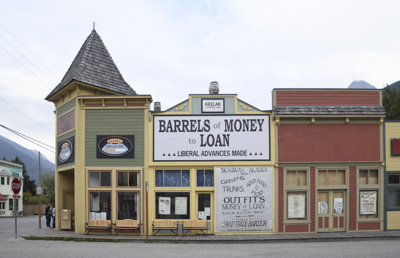
Along the steep rock face of the hill next to where our ship was docked there was interesting graffiti. Someone told us that when the captain of one of the ships is making his last cruise before retiring, crew members enlist a dock crane to write the captain’s name and ship on the rocks. This was just one small part of the wall:
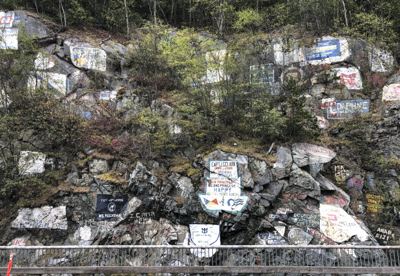
We hurried to return to the ship before “Sail Away” to relax and enjoy a pleasant dinner as the sun set over the mountains.
